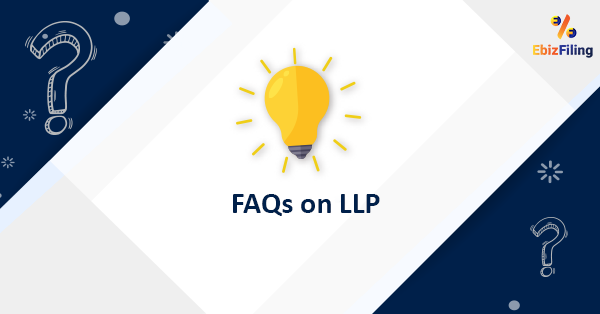
-
November 22, 2021
Table of Content
Eight Steps to Register your LLP in India.
This article explains the complete step-wise procedure for registering an LLP in India. In upcoming sections, you will read details about the exact process of How to register an LLP in India, documents needed for LLP registration, Forms to be filed for LLP registration, etc.
Limited Liability Partnership (LLP) is a partnership in which partners have limited liability. It can exhibit characteristics of both partnerships and companies. In an LLP, an individual partner is not responsible or liable for any other partner’s misconduct or negligence. LLP was introduced in India in the Limited Liability Partnership Act, 2008.
Step 1: Obtain Digital Signature Certificate (DSC)
Every form or application filed online with the MCA requires to be signed digitally by the applicants and the partners of an LLP. Therefore, the DSC with a validity of 2 years is obtained for the designated partners of the Limited Liability Partnership. The DSC is associated with the PAN card of the application. It additionally requires a passport size photograph and address proof.
Step 2: Obtain LLP Name Approval
The applicant has to then file a web form called RUN-LLP (Reserve Unique Name – Limited Liability Partnership). RUN-LLP has replaced the old form LLP Form 1. The new form has been simplified, upgraded version of the order form. The application can be made with a maximum of 2 names in the order of preference The names must comply with the provisions applicable for the name reservation. If none of the names is approved by the MCA, one resubmission is allowed.
Once the name is allotted, it is reserved for a period of 90 days from the date of approval.
Step 3: LLP Incorporation (including DIN Application)
The major change in the new process is in this step Earlier, the incorporation application was required to be filed in LLP form 2, which is now replaced with FiLLiP (Form for incorporation of Limited Liability Partnership). The most significant part is the integration of the DIN Allotment Application and the incorporation application. Below mentioned are the features of the application:
- DPIN/DIN application for a maximum of 2 Designated Partners (DPs) can be made under the application. If there are more than 2 DPs who do not hold DIN, they can be added later by following respective filings. Know more on how to apply for DIN for additional partners.
- With this form, the application for name reservation can also be made. The applicants can either choose to reserve the name through an LLP-RUN or this form.
The application is accompanied by a set of required documents including the subscriber’s sheet and registered office address proof. The e-form has to be digitally signed by the partners through their DSC and certified by a practicing professional (CA/CS/CWA). Documents required for LLP registration have been explained in a separate article.
Step 4: Processing of LLP Application
The application will be processed for approval by the Central Registration Centre (CRC). If the registrar finds it necessary to call for further documents or information, it may do so by calling for re-submission within 15 days. Upon approval of the application made to register an LLP online, the Certificate of Incorporation (COI) will be issued in form 16 along with DPIN/DIN allotted to the Designated Partners. COI will also consist of the Limited Liability Partnership Identification Number (LLPIN). The date of COI will be the date of LLP incorporation.
Step 5: Apply for PAN
Unlike the case of a company, the application for PAN is required to be made separately for LLP through offline or online mode. The applications are made directly to the Income Tax Department and are also processed by it. The applications are made in the form 49A with Certificate of Incorporation as supporting proof.
Step 6: Apply for TAN
Application for TAN is to be made by applying in form 49B through online or offline modes. Know more here on what TAN is and why you need it.
Step 7: Preparing and Filing of LLP Agreement
This is an important step of the LLP incorporation procedure. An LLP Agreement has to be drafted very carefully and should take into consideration numerous points. The name, business objective, place of business and all other essentials of the LLP. Other clauses include the capital, profit sharing ratio, rights and responsibilities of partners, etc.
Once the LLP Agreement is reviewed and agreed upon by the partners, it has to be executed by payment of stamp duty. The LLP agreement upon getting a stamp and notarized should be signed by the partners in the presence of two witnesses and get attestation by those two witnesses.
Note: The agreement must be filed with MCA within 30 days of date of incorporation. The delay means a penalty of Rs 100/day from the date of default till the date of actual filing.
These particulars are filed in the LLP form-3. Further, verification and approval are processed by the concerned State RoC instead of CRC.
Step 8: Obtain GST Registration for LLP
GST Registration for LLP is the final step of the entire procedure. GST Registration is not mandatory for an LLP. However, it is required to be obtained if a Limited Liability Partnership is expected to deal in inter-state transactions. It is advisable to obtain GST Registration if LLP proposes to incur expenses or buy goods, having GST elements in the same.
About Ebizfiling -








thank you for the information it is a great help in know how to register llp in india thanks you for the article will surely connect
Hello sir,
We are glad that you enjoyed our content. Please contact us at +919643203209 / mail us at info@ebizfiling.com, if you need any additional information or assistance.
Thanks for reading.
I heard that there’s a new entity called “Small LLP” that we could create to reduce all the hassles of maintaining a regular LLP.
If so, can ebizfiling help us in forming a Small LLP?
Hello Mr Gopinath,
Yes, it’s true and surely we can help you in forming a small LLP. Our team will get in touch with you soon.
Meanwhile, you can contact our team on +919643203209 or mail us your requirement at info@ebizfiling.com.